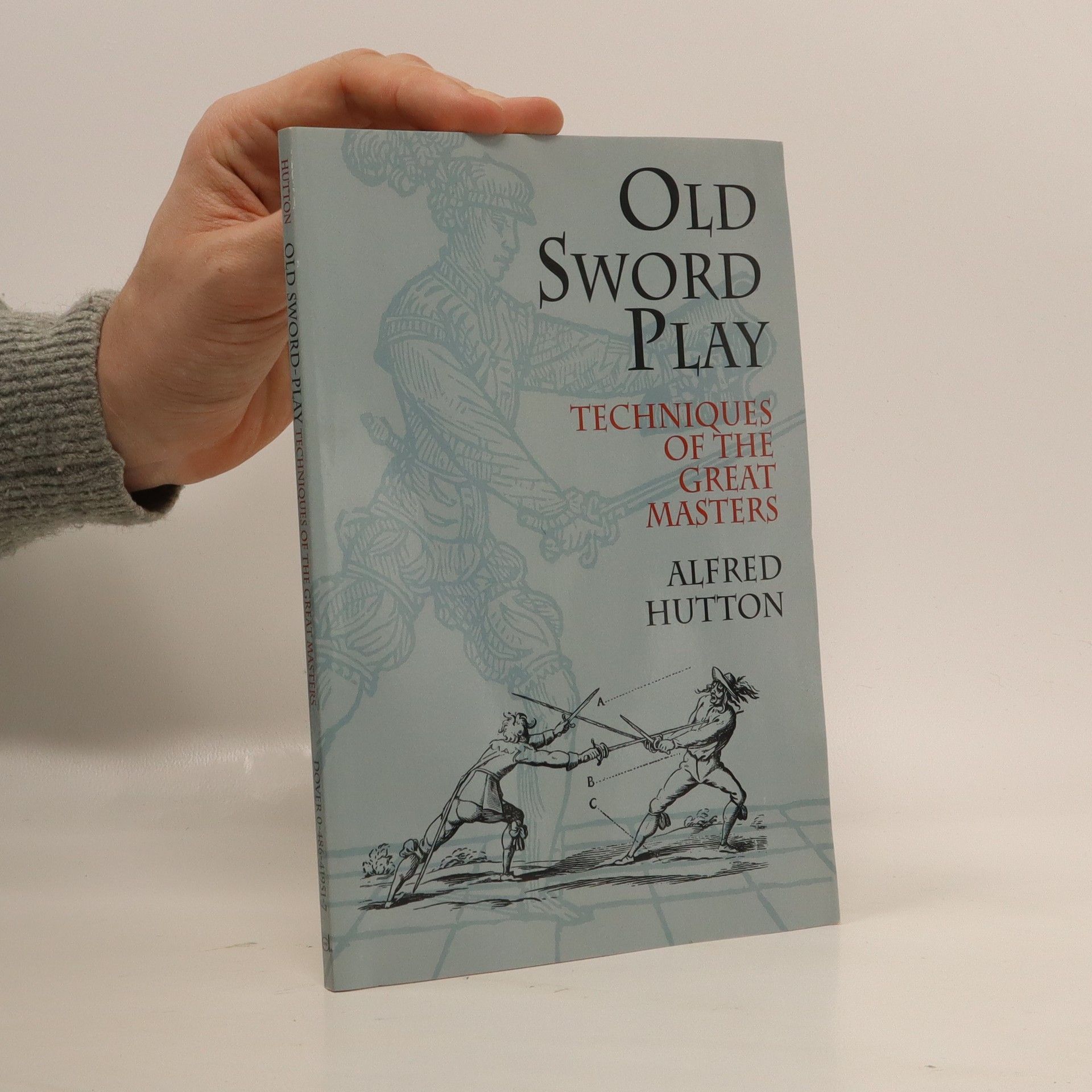A fascinating look at the history and culture of swordsmanship, covering the techniques and styles of ancient fencing masters from the 16th to the 18th centuries. Hutton's book provides insights into the history and traditions of swordplay, and is a must-read for anyone interested in the sport.
Alfred Hutton Ordine dei libri






- 2023
- 2022
This work has been selected by scholars as being culturally important, and is part of the knowledge base of civilization as we know it. This work is in the "public domain in the United States of America, and possibly other nations. Within the United States, you may freely copy and distribute this work, as no entity (individual or corporate) has a copyright on the body of the work. Scholars believe, and we concur, that this work is important enough to be preserved, reproduced, and made generally available to the public. We appreciate your support of the preservation process, and thank you for being an important part of keeping this knowledge alive and relevant.
- 2010
The book offers a detailed exploration of swords utilized in Europe over the past five centuries, highlighting their historical significance and the single combats associated with them. It covers key periods such as the Age of Chivalry, the Rapier era, and the Nineteenth Century, providing insights into the evolution of swordsmanship and combat styles. With original illustrations, this work serves as a valuable resource for enthusiasts of military history and weaponry, now republished in an accessible modern edition.
- 2009
This antiquarian book offers a facsimile reprint of a historically significant work, preserving its original content despite potential imperfections like marks and notations from its age. Emphasizing cultural importance, the reprint aims to protect and promote classic literature, providing readers with an accessible and high-quality edition that reflects the authenticity of the original text.
- 2009
Focusing on practical techniques, this 1882 manual offers insights into bayonet fencing from the perspective of a former dragoon officer. Emphasizing real-world application over ceremonial practices, it aims to equip readers for combat scenarios rather than parade-ground displays. The author's late-Victorian background adds historical context to the techniques and strategies presented, making it a unique resource for enthusiasts of martial arts and military history.
- 2008
Fixed Bayonets
A Complete System Of Fence For The British Magazine Rifle (1890)
- 200pagine
- 7 ore di lettura
Focusing on the techniques of fencing with the British magazine rifle, this guide by Alfred Hutton provides an in-depth exploration of various positions, movements, and strategies for effective close combat. Hutton, a seasoned swordsman and British Army captain, combines his military experience with detailed instructions and illustrations, making the content accessible to all skill levels. The book is organized into chapters that cover essential topics, including the use of the bayonet, and serves as a valuable resource for enthusiasts of military history and fencing.
- 2007
Fixed Bayonets - A Complete System of Fence for the British Magazine Rifle.
- 200pagine
- 7 ore di lettura
Focusing on the bayonet's application in the 19th century, this comprehensive guide details its use with the British magazine rifle introduced in 1890. Authored by Alfred Hutton, it covers offensive and defensive techniques, including lunges and parries, while providing glossaries of relevant terminology in English, French, and Italian. The book is richly illustrated, making it an essential resource for understanding the enduring significance of the bayonet in military history.
- 2004
The sabre, with the rapier and epee, has been the third arm of fencing for centuries, and also served as the major cavalry weapon. The art of fencing with the sabre is significantly different to the delicacy of epee or the thrust of rapier, and this book explains why. Hutton begins by looking at the construction of the sabre and how to hold it. This is followed by an explanation of the different strokes and defences, and how to combine attack and defence. He then progresses to the more advanced art of sabre fencing, and how left-handed swordsmen should fight. The treatment is in considerable detail, and is as relevant today for the sabre fencer as when the book was first published, in 1889. Hurtton s treatise on the sabre continues with the ceremonial aspects of the art. He also looks at sabre against bayonet, and the French sword. There are descriptions of assocaited weapons such as the great stick and the constable s truncheon, and the book concludes with a look at the sword-bayonet, short sword and dagger. There are numerous illustrations in the books, with a total of 55 movement drawing diagrams.